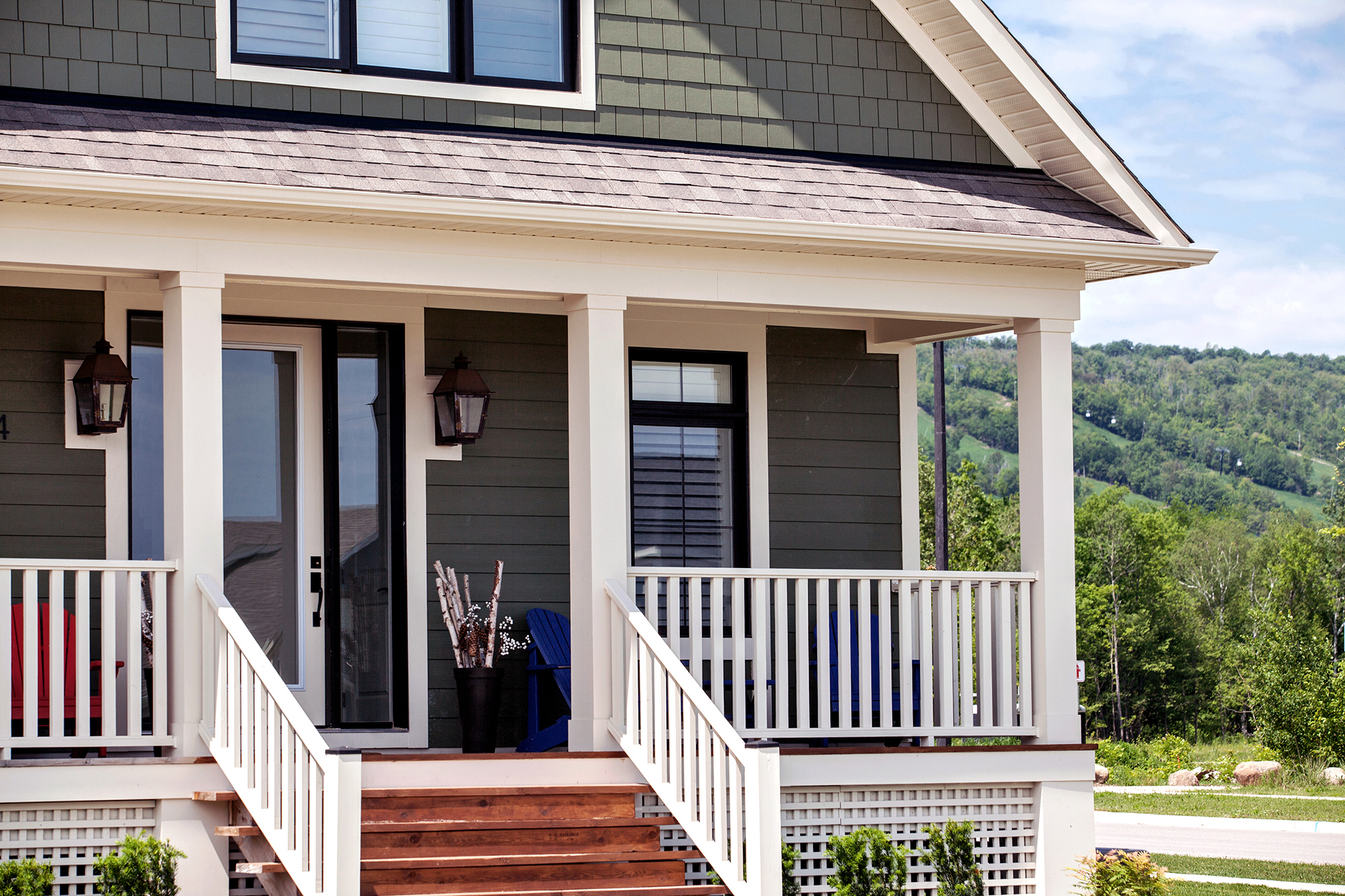When you invest in long-lasting James Hardie siding for your home exterior, you’re getting one of the most durable and eye-catching materials around. But even Hardie siding needs some basic—and simple!—upkeep so you can be sure to enjoy the most satisfying results from it.
Follow these easy tips for keeping your James Hardie siding clean and looking new, year after year.
6 Things to Know as You Maintain Your Hardie Siding
Hardie Board is designed to be long-lasting and low maintenance, but you’ll get a longer life out of it if you’ll follow these 5 rules.
1. Gently Wash It 1-2 Times a Year
Over time, dust, dirt and other contaminating elements such as grease and mold can build up on the exterior of your home. The result can dull your Hardie siding’s beautiful colors, and lead to stubborn stains if not cleaned. So it’s a good idea to rinse your siding every 6-12 months.
The key is to do so gently, so as not to accidentally harm your Hardie Board. Use a garden hose to rinse the siding, then address dirty spots by using a soft wet cloth or soft-bristle brush to apply warm water mixed with a mild detergent.
2. Avoid Harsh Cleansers and Chemicals
While it may be tempting to use strong cleansers or tools, it’s important to only use techniques that are gentle. That means you should say no to high-pressure power washers and acid washing, which can damage your Hardie siding. Before applying a cleanser, double-check that it is made for fiber cement.
Also, keep in mind that chemicals like de-icer—while great for melting snow—can mar the finish of your Hardie siding. In areas near your home exterior, use sand or gravel instead of ice salts.
3. Inspect the Caulking
When your Hardie siding is installed, caulking is used to “glue” the siding to the exterior wall. As time passes, that caulk can wear away, loosen, dry up or crack. As a result, moisture can sneak underneath the siding and foster mold growth and wood rot.
Regularly inspect your Hardie Board to see how the caulking looks. If it appears brittle, damaged, or is missing, fix the problem spots with new caulk, preferably a permanently flexible type designed to work well for the Hardie brand.
4. Tend to Landscaping and Drainage
It’s good practice to keep a bit of space between your home exterior and the elements of your landscaping. Trim trees and shrubs so they don’t accidentally scrape your Hardie siding.
You can also avoid water stains and mold growth by making sure that your sprinkler system doesn’t point at the siding, and that gutters and drains direct water runoff away from your foundation.
5. Repaint When Needed
Hardie Board may come with a factory-applied ColorPlus™ finish, or it may come pre-primed for painting. And while fiber cement holds its color well, it will eventually need to be given a fresh coat of paint.
Be aware that if your Hardie siding has a ColorPlus finish, painting it before its 15-year warranty is up will void that warranty. But if you do decide to paint, be sure to remove old paint and properly prime the surface so the new paint holds. Avoid using stains, which are not recommended for fiber cement products.
6. Patch and Repair Minor Damage
Fiber cement is a sturdy, durable material—especially when it’s industry-leading James Hardie siding. But even time can take its toll. So, in the unlikely event that a dent or crack occurs in one of your siding boards, you can address the issue with a patching compound designed specifically for fiber cement siding.
Keep Your Home Exterior in Tip-Top Shape with Smart Exteriors
You’ll love how new James Hardie siding gives your home beautiful, lasting, easily maintained style that makes you proud of your home all over again.
Whether you’re contemplating a siding replacement or other exterior upgrades for your home, Smart Exteriors’ team of local craftsmen will deliver results that delight you. See what Kansas City area homeowners have to say about our exterior remodeling services.

